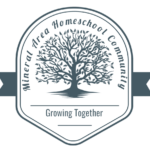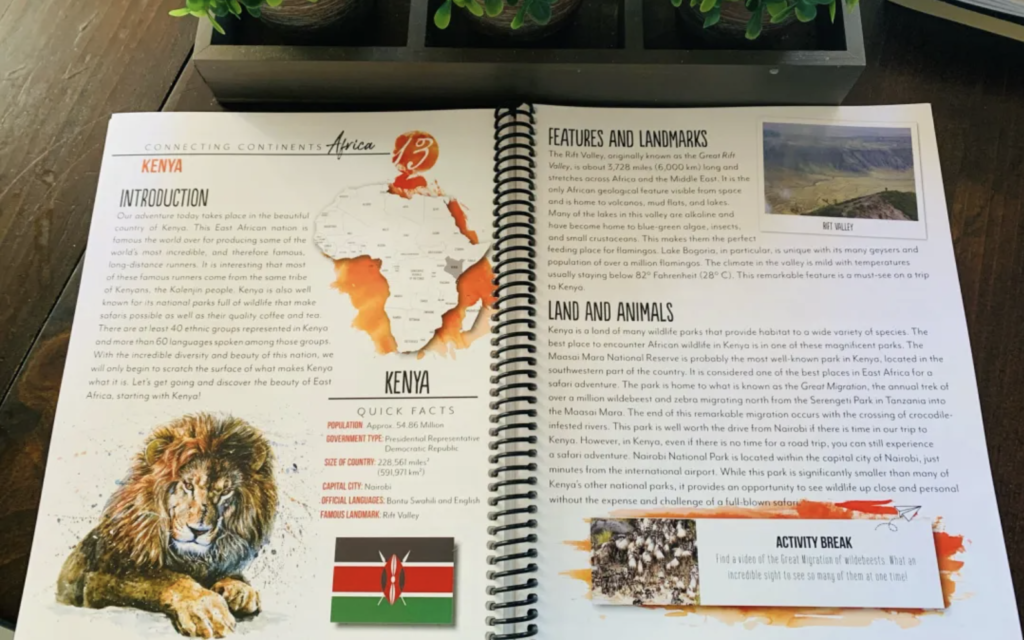Where to start? I guess starting from the beginning makes the most sense. I’m Shelly, lover of Jesus, wife of 23 years, and a homeschooling mama to 7 children (one of whom has graduated and is successfully venturing into early adulthood). We have been homeschooling for more than 15 years now. What?! How is THAT possible?! In those 15 years I have learned so much, but mostly I’ve learned to let go of a lot of things. In that process I’ve learned what’s most important in our lives, which also means I’ve learned what home education needs to look like for our family. Bear with me as I try to keep this little “Day in the Life” as short as I can. I apologize in advance for the length, as I find that God did not make me to be one who is succinct with words. wink
Over the these many years of home education I feel like I have tried all the things and researched all the curriculums. I have been overwhelmed, underwhelmed, and everything in between. I’ve overscheduled, unschooled, and I’ve now found myself somewhere in between those two ends of the spectrum, in a sweet spot that’s perfect for us (at least in this season of our lives). I found my groove somewhere along the way. One consistent style of education that has always spoken to me has been Charlotte Mason’s methods. However, I struggle to implement them in a way that would make her proud (or maybe I’m just too hard on myself as many of us mamas can be).
In the pursuit to create a Charlotte Mason style education for my children, I have learned to let some things go (as I mentioned above) and to be (mostly) okay with that. With that I’ve found a curriculum that incorporates some of my favorite things about Charlotte Mason’s methods (copywork, narration, living books, etc.) into already made unit studies. Can I get a hallelujah for anything ready-made for homeschooling?! Before I tell you the name of this helpful curriculum, lest this sound like an paid advertisement, I’m going to give you a little disclaimer. I don’t use it perfectly (or completely), I supplement a little using other curriculums, and as with EVERY curriculum I have learned NOT to be a slave to it.
Curriculum is a tool that should be used as such. It can be used in ANY way we need to use it for our individual families and goals. So, keep that in mind. This curriculum (these curriculums) might be a great fit for your family, or they may not work for you. Either way is completely acceptable. I’ll touch base on what else we use and, of course, what our day looks like as we implement these unit studies, and other books/programs.
First things first. The core curriculum that we utilize (as a tool, don’t forget) is Gather Round Homeschool. It’s a curriculum that will eventually be a set of 40 units, meant to be done in a 4-year rotation. The author currently has all of year one and two complete, and some of year three. Each year has 10 units. The units can be done in any order (I won’t go into how that works, but the website explains it all.). They cover most subjects, excluding math. As the name of the curriculum implies, you gather around the table and teach these subjects/units family-style. I cannot tell you how much we enjoy coming together for them, and how much it has simplified our days, and ultimately our life. My most favorite thing about homeschooling is the conversations I have with my children. These times of gathering around the table (or living room) has given us the chance to dive deep, follow rabbit trails, and talk about all the important things of life. I didn’t want to miss that time with my kids by implementing too many online courses or using too many curriculums that involved a lot of independent book work.
As most of you probably know unit studies involve teaching many subjects under the umbrella of one overarching topic. Some of the units are science heavy, and some are history heavy, geography heavy, etc, but overall, they cover many skills in the process of learning about one big topic. For example, the unit we are currently using is “Africa.” In this unit we are obviously learning about the continent of Africa and the countries therein. However, at the same time, we are learning grammar, science, social studies, history, copywork+spelling, writing, bible, art, and the art of notebooking. We have a core lesson that we read and discuss together, from the teacher’s guide, followed by my kiddos working in individually leveled, corresponding notebooks according to their skill level, not an expected grade level. These notebooks go deeper with our current lesson/topic and just how deep the lessons go depends on the level. Obviously high schoolers dive deeper, have more in-depth writing work, and more reading and research to do than the middle schoolers, upper elementary, elementary, early readers, etc. The information on how to count high school credits when using the curriculum is also on their website.

To give a more detailed example I will chat about our lesson from today. Our lesson was on the African country of Mali. We learned about the basics of Mali like location, size, population, religion, government, official languages, and some other more general information about the nation like what countries border Mali and we mapped out its location. We discussed its desert regions, agricultural regions, and its resources, like gold. We learned about the Baobab tree and we looked at pictures of the trees and sampled the Baobab powder that we use as a supplement. We discussed Mali’s arid climate, deserts, and rivers. We learned about the West African Crocodile, and its life cycle, habitat, and diet. We learned about their need for aestivation (summer hibernation). We discussed Mali’s history and culture, like the city of Timbuktu (the Paris of the Middle Ages) and Malian Dogon dancing done by the indigenous people group the Tuaregs. We watched videos on their music and dances. We also learned a little about the famous “Hand of Fatima” rock formation. Finally, we discussed the variety of food in the many different climates and regions.
All the above was followed by the kids working in their notebooks. In their notebooks they went a bit further in their study of Mali by learning about modern conflicts there, exports, writing a postcard, drawing and/or coloring the flag of Mali while also researching the meaning of the colors and symbols, they drew or colored a West African Crocodile, high schoolers did further research on the West African Crocodile, and older kiddos also wrote at least three paragraphs comparing Timbuktu during the Middle Ages to modern day Paris.
Phew! That seems like a lot, and it really is, but we cover a lot of ground in FAR less time than we used to. It’s kind of awesome. The kids enjoy it and that also helps them to retain more knowledge. Along with our group lesson we also choose a read aloud or two that corresponds with our unit (the curriculum has extensive resource lists). We are currently reading “A Long Walk to Water” by Linda Sue Park and two biographies on David Livingstone (one of which is an audiobook). The unit studies have optional hands-on activities, video and movie ideas, and great photos and illustrations. Add on a math curriculum and you have everything covered. Truly.
You might be wondering how this family-style lesson time fits into the rest of our day. Well, we tend to start our day slowly. We are not early risers. Gasp We get up and we eat a little something, have some tea or coffee, turn on some music, read a little, and enjoy some time cuddled up under blankets in the living room. We start with a bible study. We are currently using a study called “Work Unto the Lord” by Not Consumed. Then we spend a few hours on our “formal,” family-style, unit lessons (if you want to call gathered around the living room formal). We stop for lunch, and then spend the rest of the afternoon playing outside or inside, reading, cleaning, followed by any afternoon or evening activities like church, volleyball, soccer, karate, etc.
That’s pretty much it, folks. I don’t plan much, other than what unit we will be using next, what read-alouds we will read, what hands on activities we are brave enough to try, and what little book my younger kids need next for their language arts supplements or math. I go online and make sure my big girls are making good progress with their online courses. I write down what we cover each day, in pencil, in a large planner, and I make note of any videos we watch, books we are reading, and extracurricular activities we may have. I make note of the hours we put in each day and transfer those hours to a printed-out chart at the end of the month.
Now, like I mentioned above, we like to supplement a little. The disclaimer here is that this is NOT necessary, except for a math curriculum. I will share more about these supplemental products in my next post, as well as other tools and resources that help me coordinate life for our large family.
I TRY to keep things as simple as possible. I TRY not to be too hard on myself. I TRY to keep the joy in our learning. I TRY to leave as much time in our day for child-led learning and outdoor time as possible. I TRY to incorporate music and art. I TRY, more than anything else, to make Christ the center of it all. I pray this little peek into our day is an encouragement to mamas who are new to homeschooling, or to those who are feeling burned out and need a change, and maybe it will inspire some of you to try a unit study or family-style learning approach to your home education. It has really revived our love of learning and removed stress from our days. Maybe it can do the same for you.
“Him we proclaim, warning everyone and teaching everyone with all wisdom, that we may present everyone mature in Christ.”
Colossians 1:28
Interested in writing for us? Click here to find out how to become a MAHC blogger!

